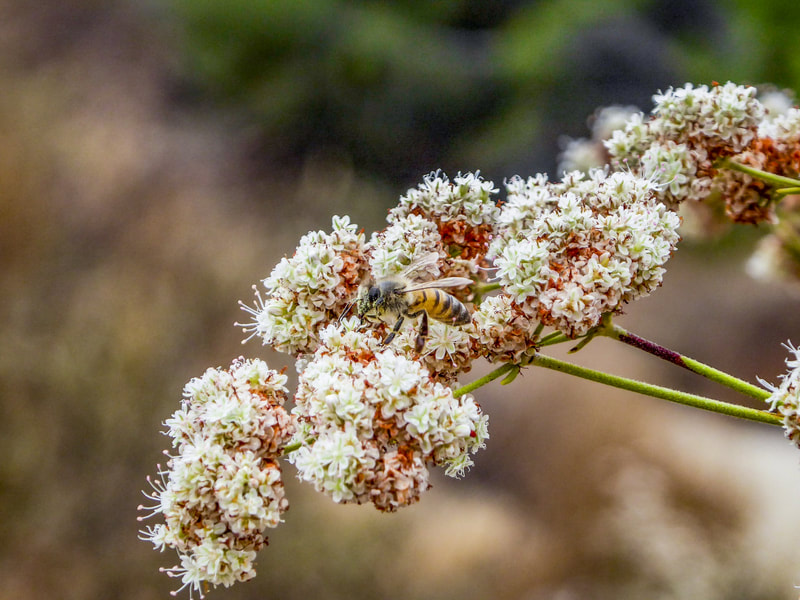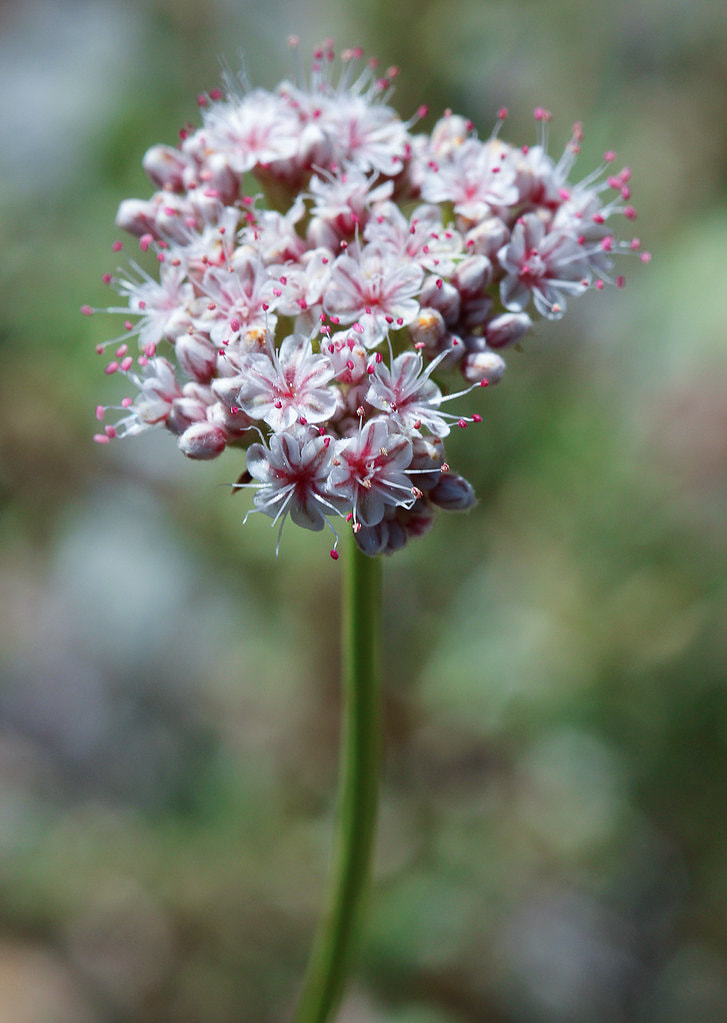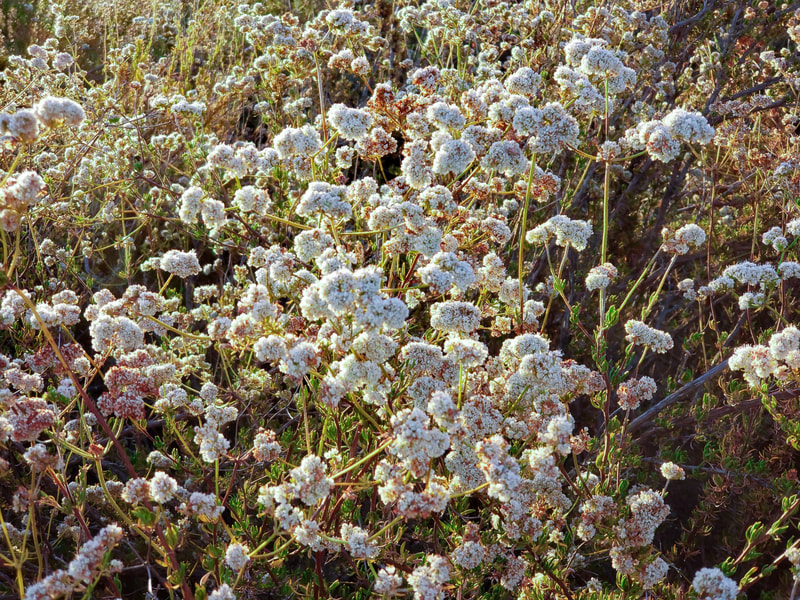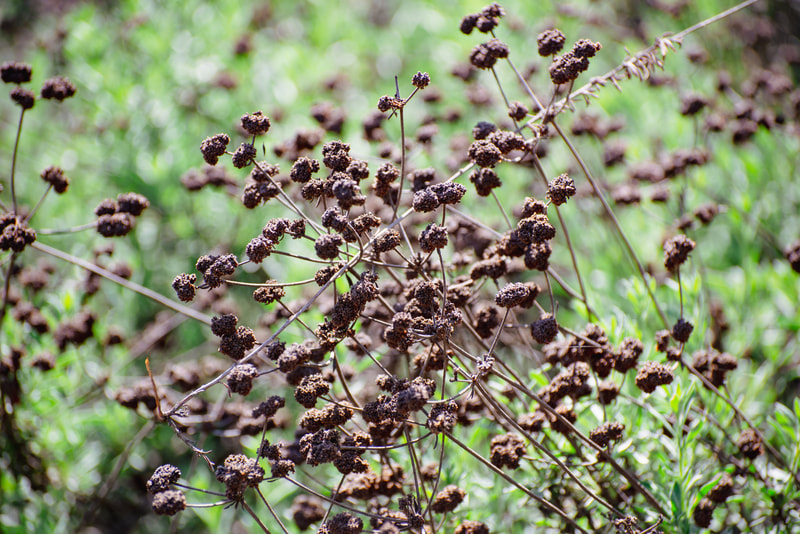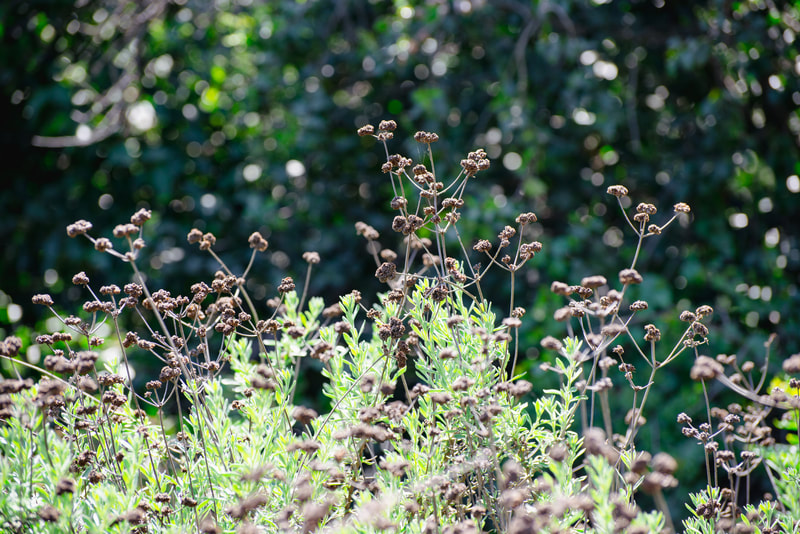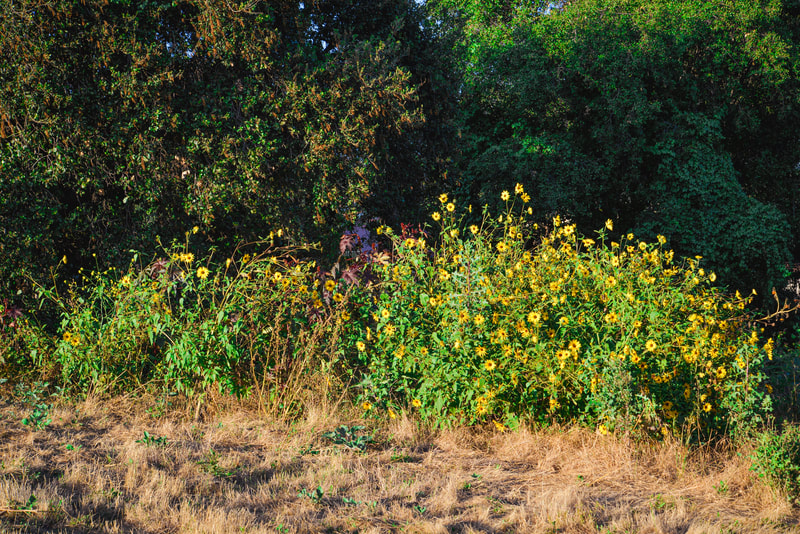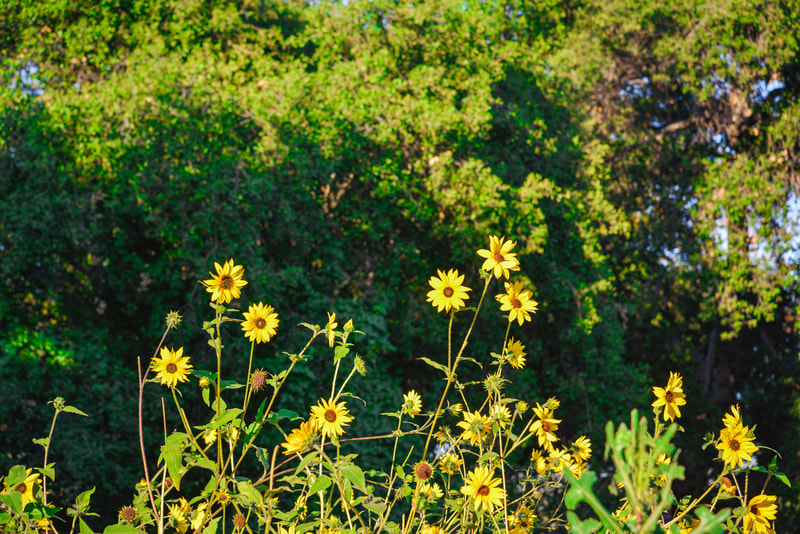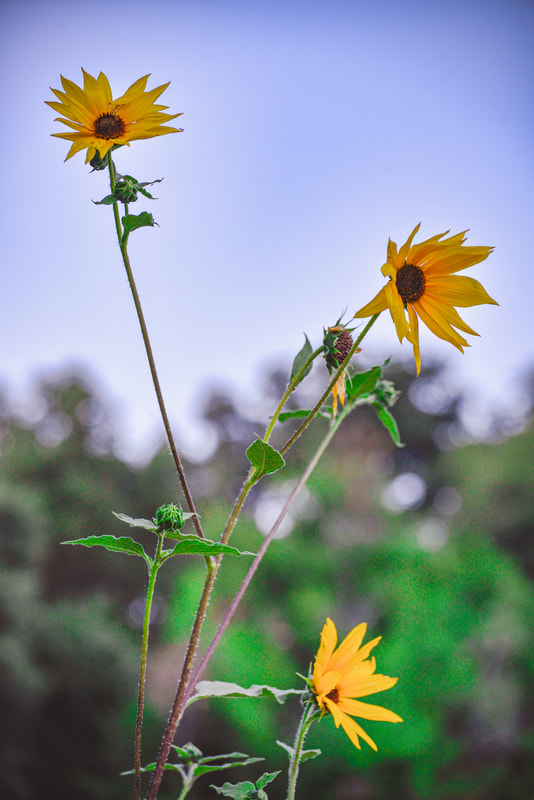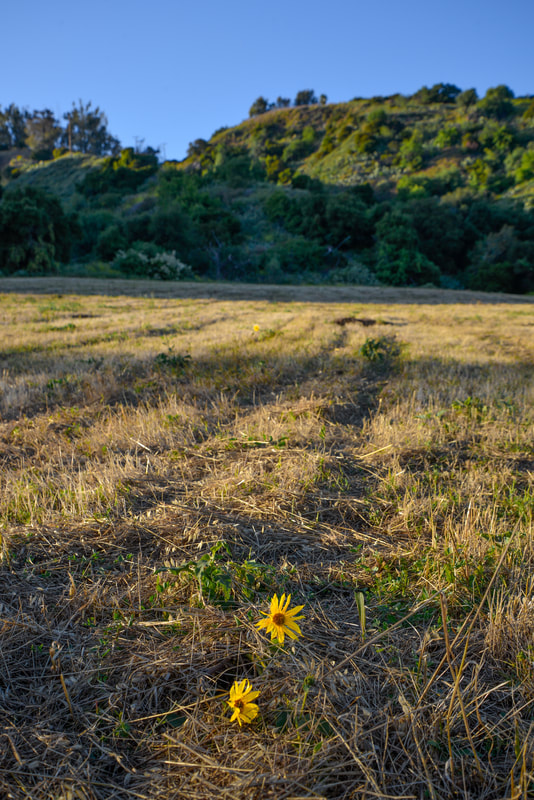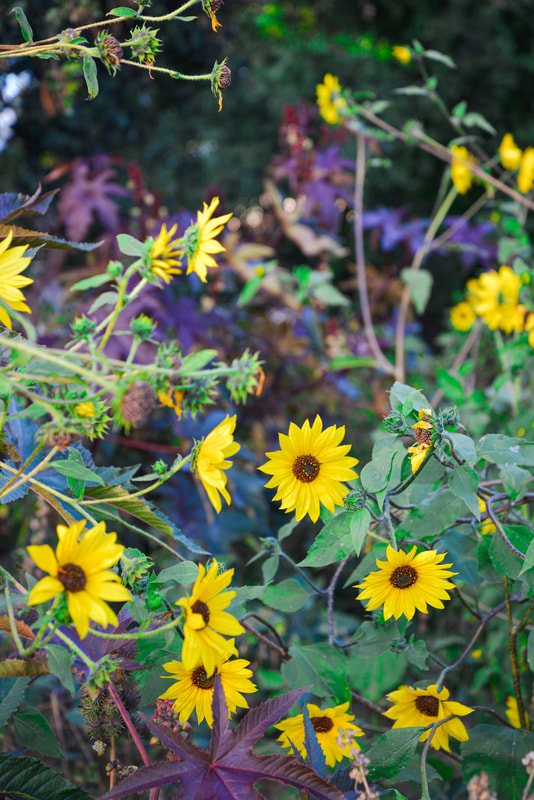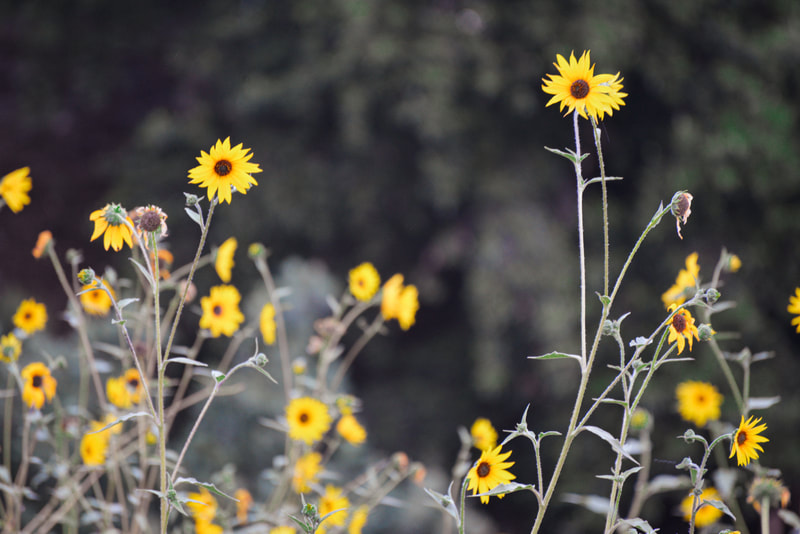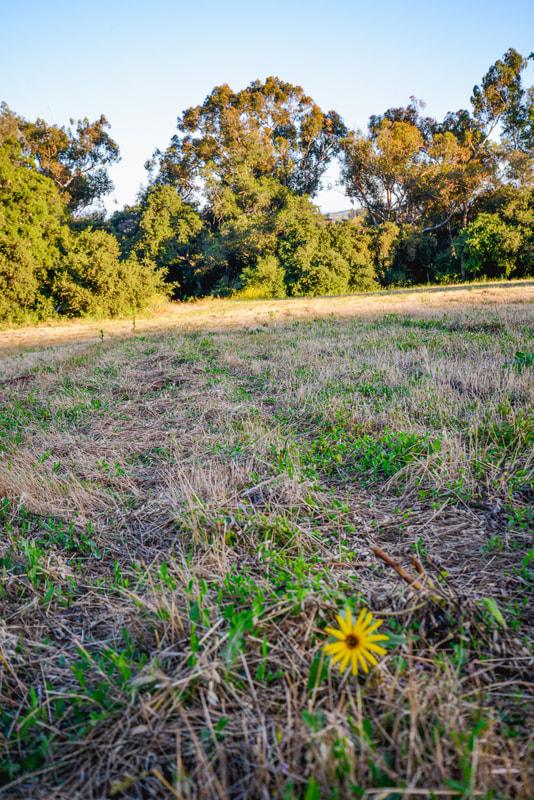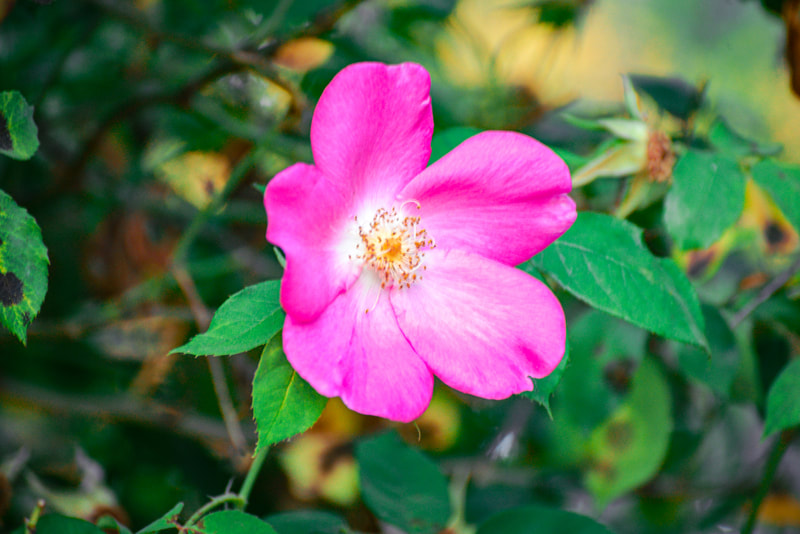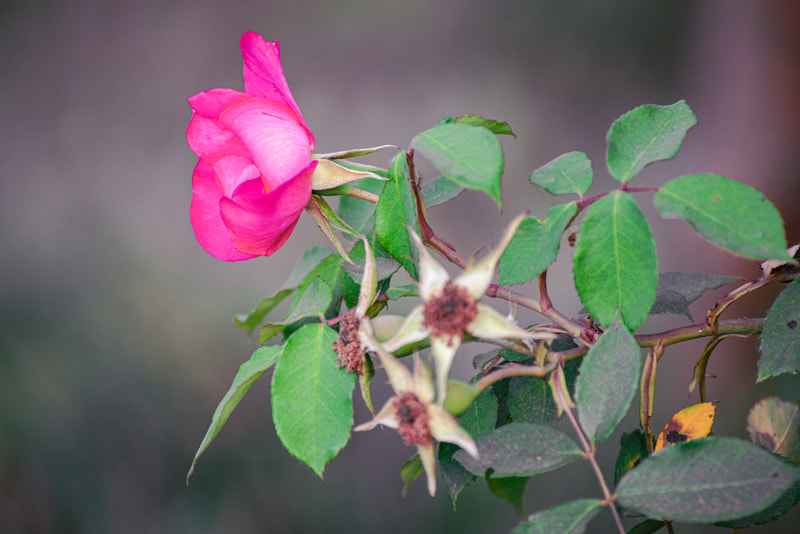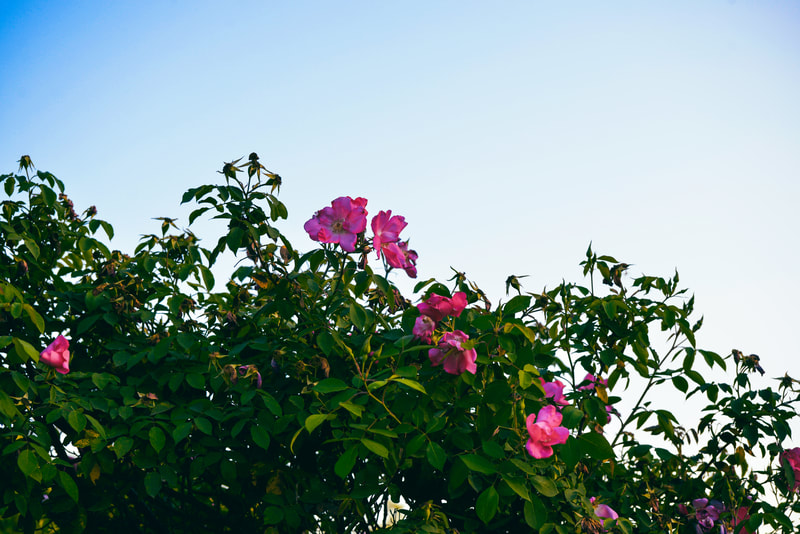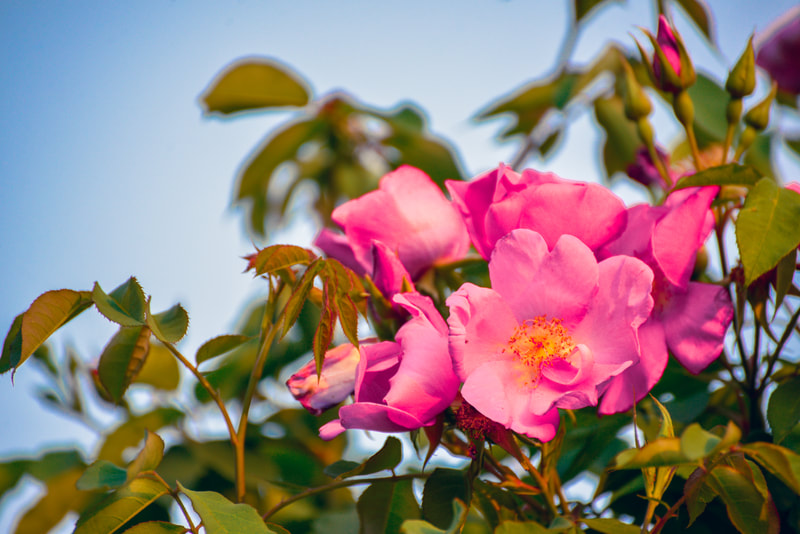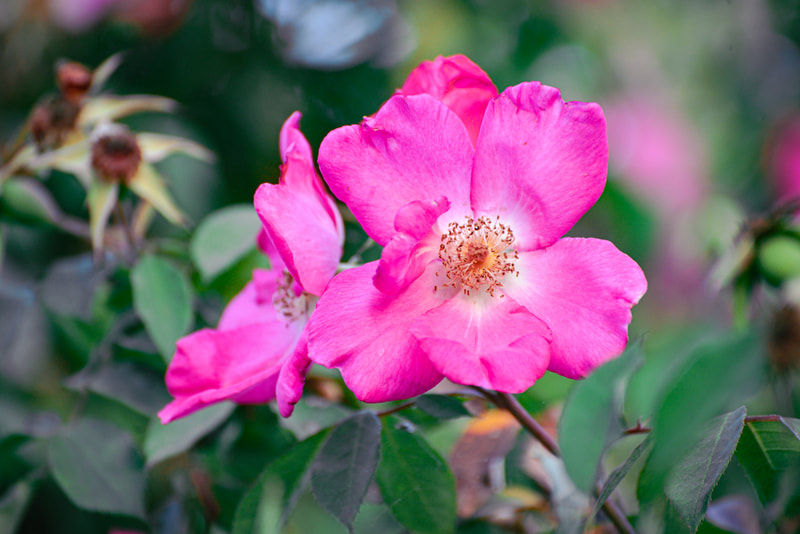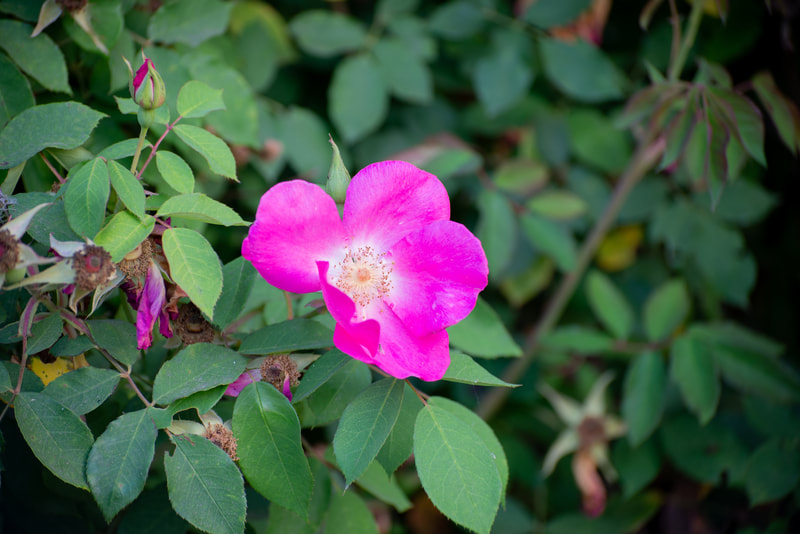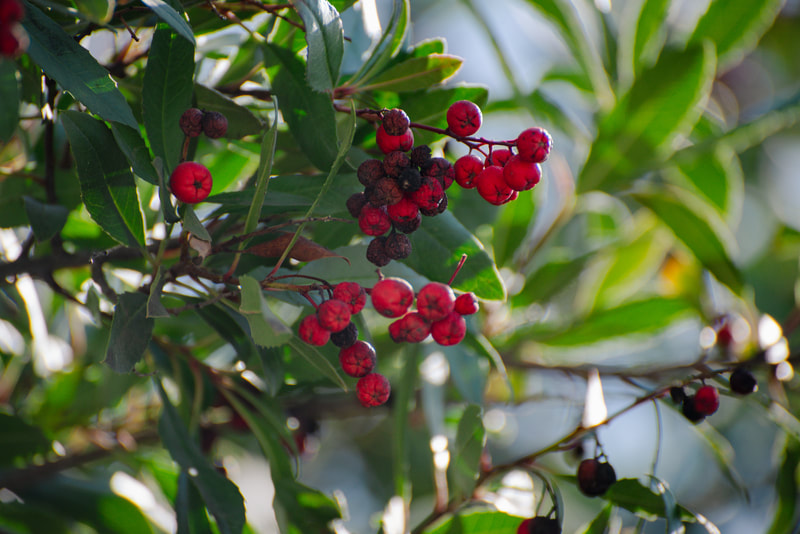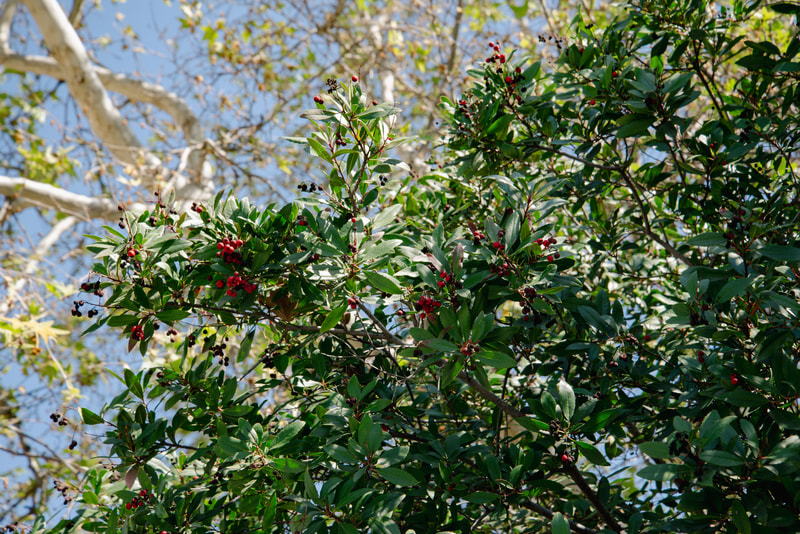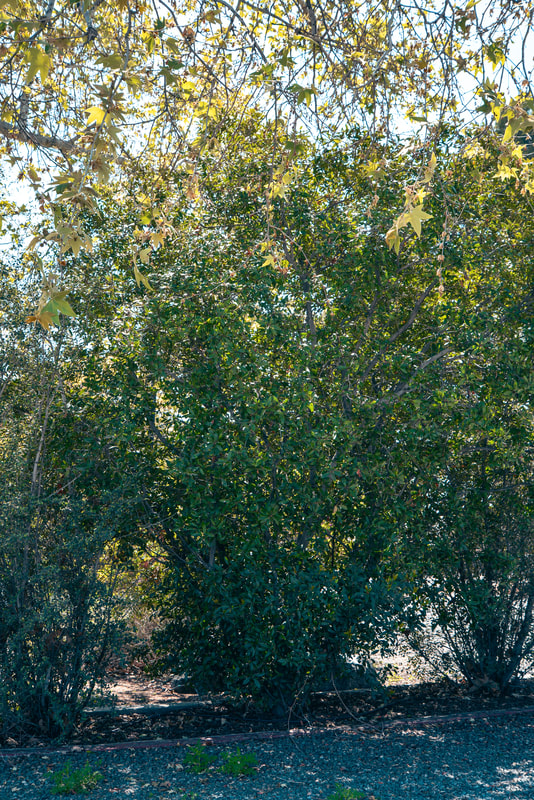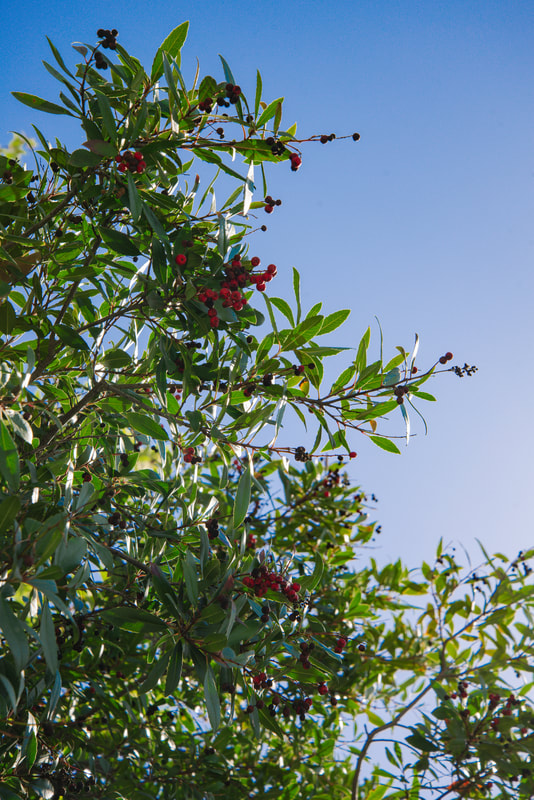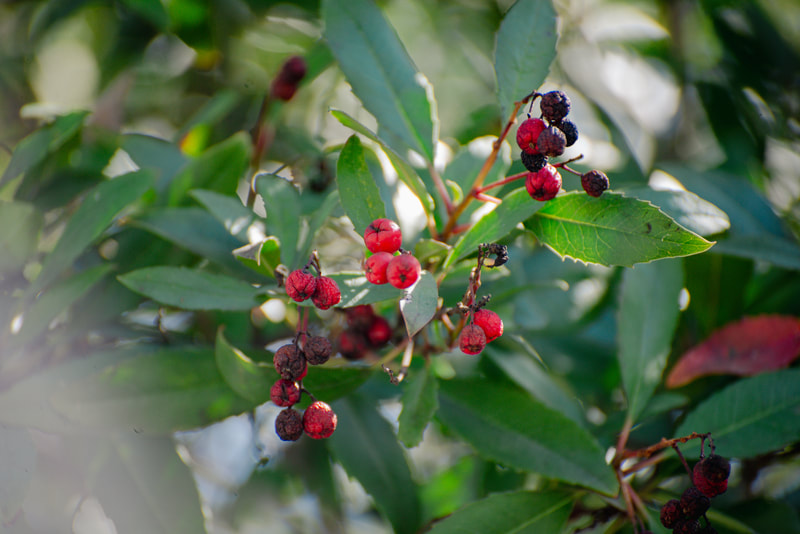Menu
Jurupa Valley
|
Hello! And welcome to the garden of Jurupa Valley!
Jurupa Valley is a new AND old place! It may have only become a city in 2011, but Jurupa Valley encompasses the ancestral lands of the Maara'yam (Serrano) and the Gabrielino/ Tongva communities. Maara'yam ancestral territory covers over 7.4 million acres of Southern California! Here in our Jurupa Valley garden, we can see Toyon, Buckwheat, Wildrose, and Sunflower! These are all important plants to our local indigenous communities! Today, Tribal Communities collaborate with local agencies, such as the United States Forest Service, National Park Service, and others, to obtain permits to gather culturally significant plants and other natural materials. Jurupa Valley is a place with a lot of possibilities. It has sustained life for millions of years. Did you know that Jurupa Valley is home to California’s oldest living plant friend?! The Hurungna Oak is 13,000 years old! In 1956 Jurupa Valley also became home to a toxic waste site called the Stringfellow Acid Pits, which will take another 500 years… from now!... to clean up! I hope we protect and create more 13,000 year old oak trees and make the best possible world for those trees and for us. |
¡Hola! ¡Y bienvenido al jardín de Jurupa Valley!
Jurupa Valley es un lugar nuevo Y antiguo. Aunque solo se convirtió en ciudad en 2011, Jurupa Valley abarca las tierras ancestrales de las comunidades Maara'yam (Serrano) y Gabrielino (/Tongva). ¡El territorio ancestral de los Maara'yam cubre más de 7.4 millones de acres del sur de California! Aquí en nuestro jardín de Jurupa Valley, podemos ver Toyon, Trigo Sarraceno, Rosa Silvestre y Girasol. ¡Estas son todas plantas importantes para nuestras comunidades indígenas locales! Hoy en día, las comunidades tribales colaboran con agencias locales, como el Servicio Forestal de los Estados Unidos, el Servicio de Parques Nacionales y otros, para obtener permisos para recolectar plantas culturalmente significativas y otros materiales naturales. Jurupa Valley es un lugar con muchas posibilidades. Ha sostenido la vida durante millones de años. ¿Sabías que Jurupa Valley es el hogar de la planta viva más antigua de California? ¡El Roble Hurungna tiene 13,000 años! En 1956, Jurupa Valley también se convirtió en el hogar de un sitio de desechos tóxicos llamado Stringfellow Acid Pits, que tardará otros 500 años... ¡desde ahora!... en limpiarse. Espero que protejamos y creemos más robles de 13,000 años y hagamos el mejor mundo posible para esos árboles y para nosotros. |
California Buckwheat (Eriogonum fasciculatum) Hunaaqac
|
Southern California Indigenous Communities and Buckwheat, “Hunaaqac”
Have you ever heard of buckwheat? Isn’t that a fun word to say? Say it with me: Buckwheat. California buckwheat grows within dry and open areas of California. In desert climates, buckwheat really shines in the wetter seasons like winter and spring. Both the shoots and the seeds of buckwheat are offered by the plant for eating! Buckwheat is a generous friend. The plant can be ground into a meal for cakes or mush and a beverage can be made from the seeds. When I say buckwheat is generous, it doesn’t just offer food. It is also medicinal! Indigenous Communities of this region use buckwheat for everything from headaches to tummy aches! We love you buckwheat! |
Comunidades Indígenas del Sur de California y Alforfón, “Hunaaqac”
¿Alguna vez has oído hablar del alforfón? ¿No es una palabra divertida de decir? Dila conmigo: Alforfón. El alforfón de California crece en áreas secas y abiertas de California. En climas desérticos, el alforfón brilla especialmente en las estaciones más húmedas, como el invierno y la primavera. ¡Tanto los brotes como las semillas del alforfón son ofrecidos por la planta para comer! El alforfón es un amigo generoso. La planta se puede moler para hacer harina para pasteles o gachas, y se puede preparar una bebida con las semillas. Cuando digo que el alforfón es generoso, no solo ofrece comida. ¡También es medicinal! Las comunidades indígenas de esta región utilizan el alforfón para todo, desde dolores de cabeza hasta dolores de estómago. ¡Te queremos, alforfón! |
California Sunflower (Helianthus californicus) Pa’aqc
|
Southern California Indigenous Communities and California Sunflower, “Pa’aqc”
Don’t you love sunflowers? I really love them! They remind me of the sun and I just love the sun! You might think I’m the star of this show, but it’s actually… the sun! It gives us vitamins and light and helps all of our plant friends grow big and strong! It takes such good care of us! Sunflowers, which are named for the sun, are important to the Indigenous Communities of Southern California! Only recorded in modern times, the seeds can be dried and ground into flour to mix with other seeds. The sunflower seeds are harvested in the fall. Can you think of anything else harvested in the fall? Do you like sunflower seeds? They are so yummy! They have the same kind of good stuff as olive oil and they have no starches or tannins! That means they’re really good for you. Where have you seen wild sunflowers around where you live? Do you think you’ll plant more now? I sure hope so! |
Comunidades Indígenas del Sur de California y Girasol de California, “Pa’aqc”
¿No te encantan los girasoles? ¡A mí realmente me encantan! Me recuerdan al sol y ¡simplemente adoro el sol! Podrías pensar que yo soy la estrella de este espectáculo, pero en realidad es... ¡el sol! ¡Nos da vitaminas y luz y ayuda a todos nuestros amigos vegetales a crecer grandes y fuertes! ¡Nos cuida tan bien! Los girasoles, que reciben su nombre del sol, son importantes para las comunidades Indígenas del sur de California. Solo se registró en tiempos modernos que las semillas pueden ser secadas y molidas en harina para mezclar con otras semillas. Las semillas de girasol se cosechan en el otoño. ¿Puedes pensar en algo más que se coseche en otoño? ¿Te gustan las semillas de girasol? ¡Son tan deliciosas! Tienen los mismos beneficios que el aceite de oliva y no contienen almidones ni taninos. ¡Eso significa que son realmente buenas para ti! ¿Dónde has visto girasoles silvestres cerca de donde vives? ¿Crees que plantarás más ahora? ¡Yo realmente espero que sí! |
California Wildrose (Rosa californica)
|
Southern California Indigenous Communities and Wild Rose
Did you know that California has a native wild rose? The California wildrose can be found in moist places, like cienegas (I love that word), swamps, or along streams. The California wildrose isn’t just beautiful to look at and smell, you can eat it too! Wildrose can be eaten raw, and the blossoms can be made into a beverage. Wildrose is a great source of vitamin C. What do you like to eat to get your vitamin C? Wildrose tea isn’t just great for vitamin C, it’s great for relieving stomach aches! Have you ever eaten anything with rose flavor? Would you drink rose tea? What other kinds of fragrant flowers are used to calm or drink? |
Comunidades Indígenas del Sur de California y Rosa Silvestre
¿Sabías que California tiene una rosa silvestre nativa? La rosa silvestre de California se puede encontrar en lugares húmedos, como ciénegas (me encanta esa palabra), pantanos o a lo largo de los arroyos. La rosa silvestre de California no solo es hermosa de mirar y oler, ¡también se puede comer! La rosa silvestre se puede comer cruda, y las flores se pueden hacer en una bebida. La rosa silvestre es una gran fuente de vitamina C. ¿Qué te gusta comer para obtener tu vitamina C? ¡El té de rosa silvestre no solo es excelente para la vitamina C, sino también para aliviar dolores de estómago! ¿Alguna vez has comido algo con sabor a rosa? ¿Beberías té de rosa? ¿Qué otras flores fragantes se usan para calmar o beber? |
Toyon (Heteromeles arbutifolia)
|
Southern California Indigenous Communities and Toyon
Toyon grows on the brushy slopes and in the canyons of southern California. Toyon is also called holly, because it looks so much like the European holly which is used during the winter season to decorate! And it can be eaten! Toyon berries can be eaten cooked or raw, but they are mainly eaten after being heated. They can be roasted or tossed into hot coals or left out in the sun! You should try that with your worries some day! Once they are prepared, the Toyon berries can be used for lots of yummy foods and medicines! The wood is hard, so it can be used for poles, baskets, or even arrows of fish hooks! Now that is one generous plant friend, don’t you think? It’s important we protect our generous plant friend by not picking berries that we don’t have permission to pick. In fact, it’s even against the law in California to pick toyon that isn’t yours or without permission! Can you think of other plant friends we protect? Are there any plant friends you want to protect? |
Comunidades Indígenas del Sur de California y Toyon
El toyon crece en las laderas arbustivas y en los cañones del sur de California. El toyon también se llama acebo, porque se parece mucho al acebo europeo que se utiliza durante la temporada invernal para decorar. ¡Y también se puede comer! Las bayas de toyon se pueden comer cocidas o crudas, pero se comen principalmente después de ser calentadas. ¡Pueden ser asadas, echadas en brasas calientes o dejadas al sol! ¡Deberías intentar eso con tus preocupaciones algún día! Una vez que se preparan, ¡las bayas de Toyon se pueden usar para muchos alimentos y medicinas deliciosas! La madera es dura, por lo que se puede usar para postes, cestas o incluso flechas y anzuelos. ¡Eso sí que es una planta generosa, ¿no crees? Debemos proteger a nuestra generosa amiga planta no recolectando bayas sin permiso. ¡En California, incluso es ilegal recoger toyon que no sea tuyo o sin permiso! ¿Puedes pensar en otros amigos vegetales que protegemos? ¿Hay algún amigo vegetal que quieras proteger? |
Site powered by Weebly. Managed by iPage
